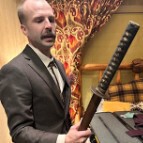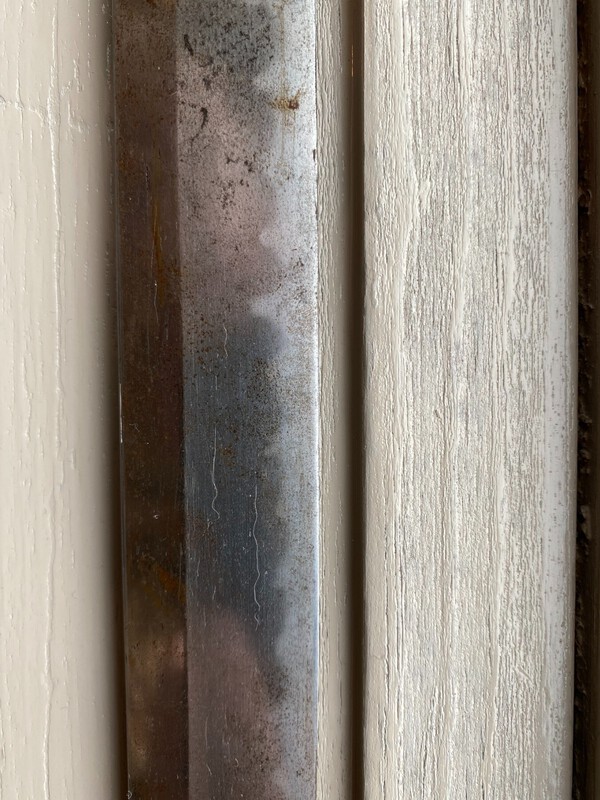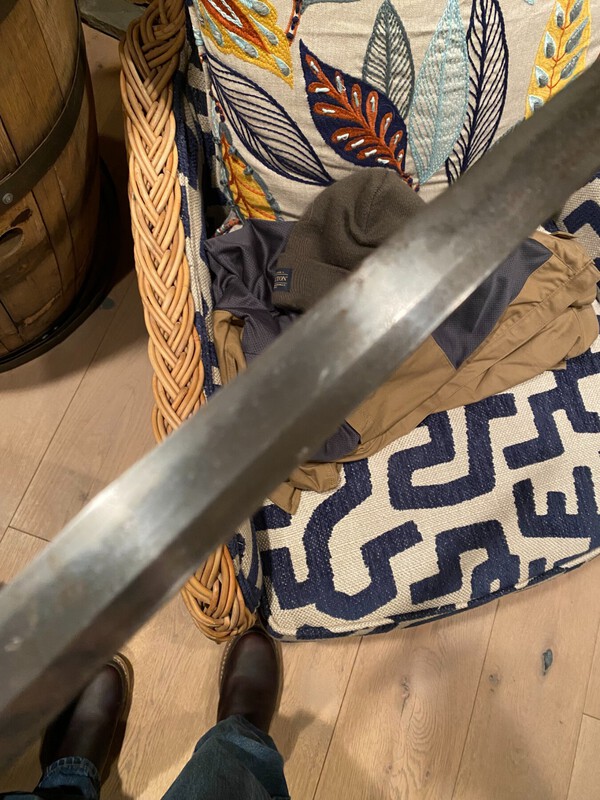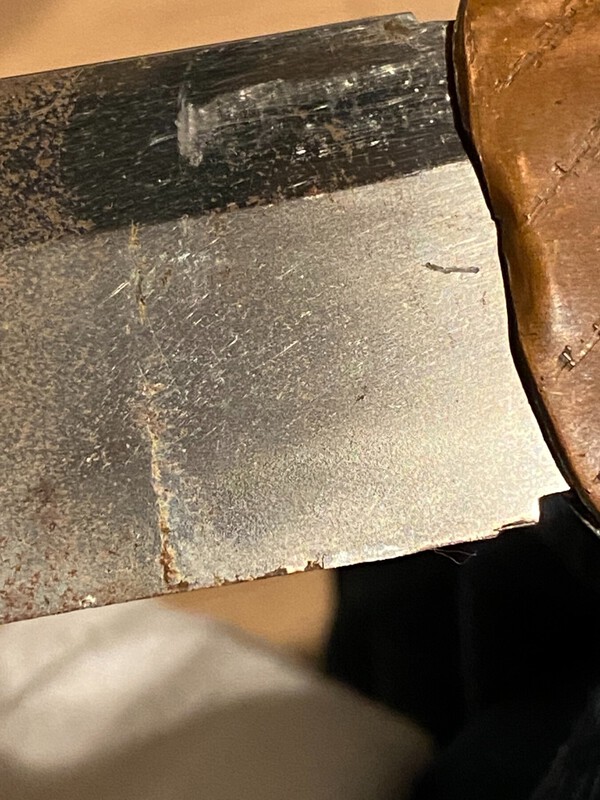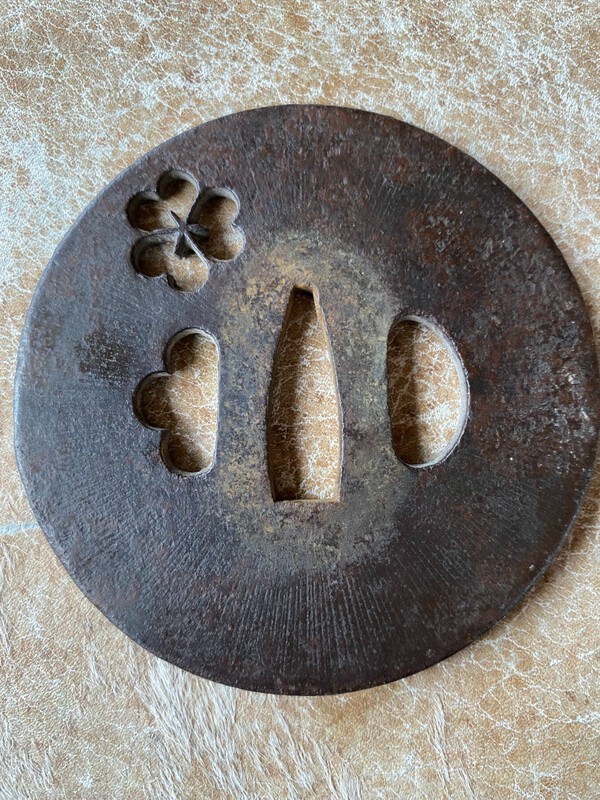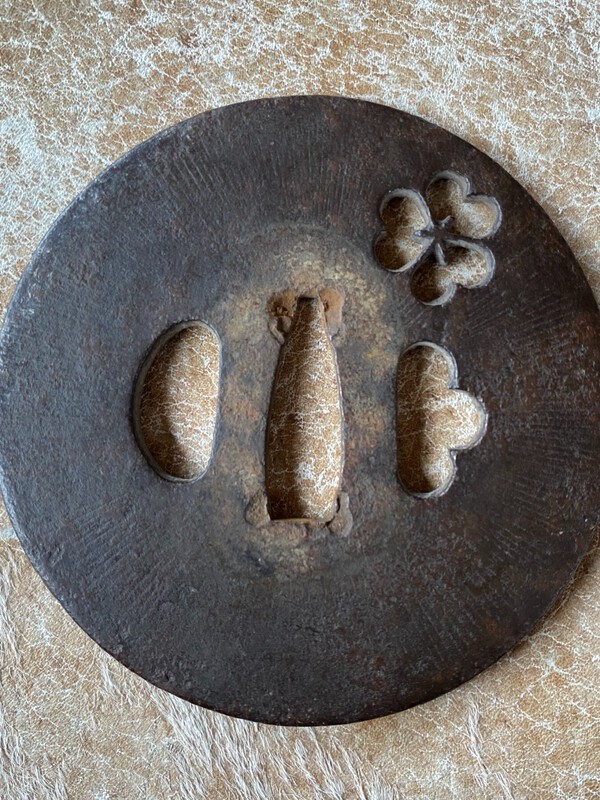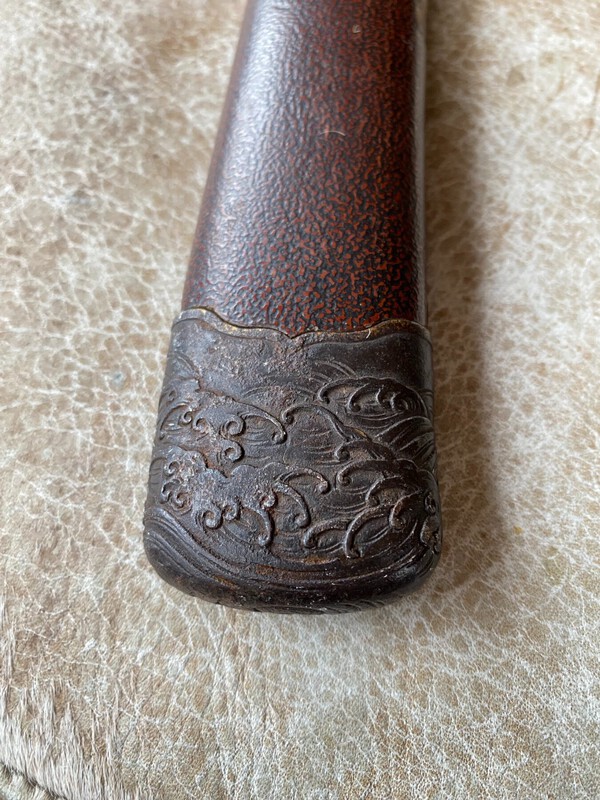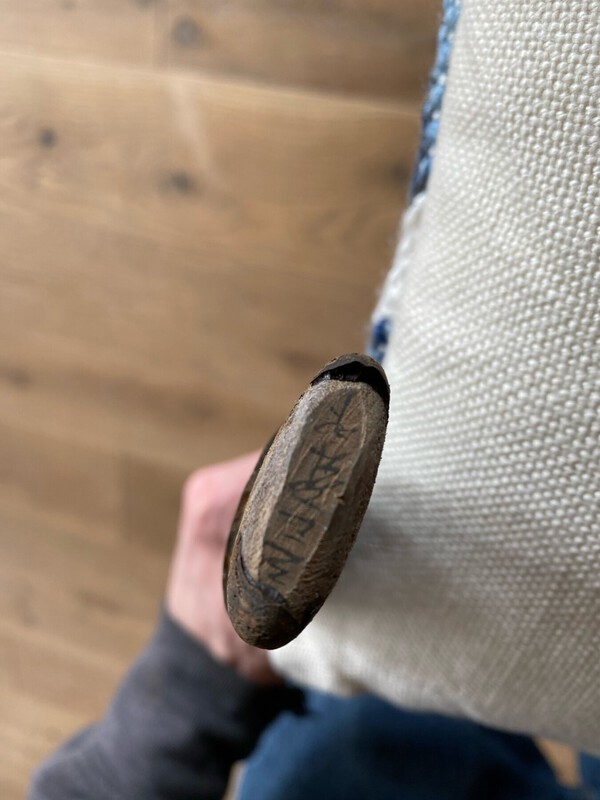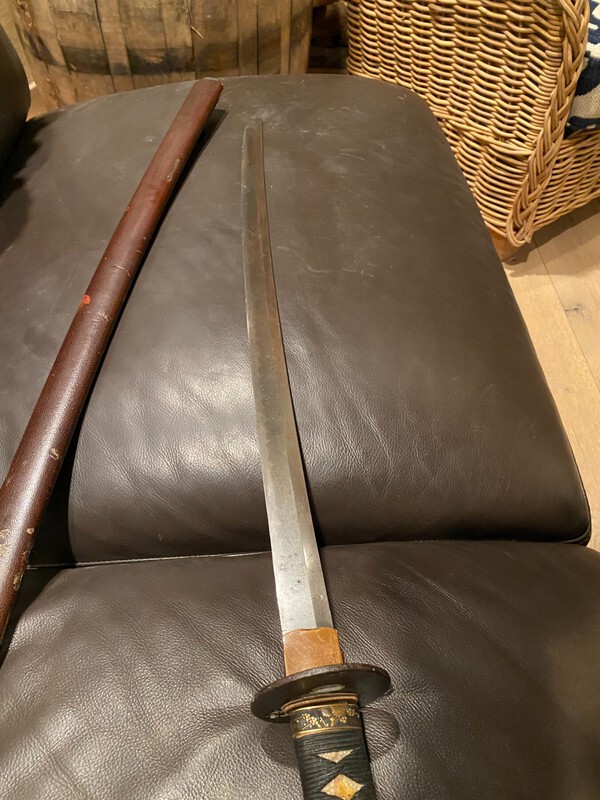-
Posts
1,112 -
Joined
-
Last visited
-
Days Won
7
Content Type
Profiles
Forums
Events
Store
Downloads
Gallery
Everything posted by Scogg
-
Apologies for reviving this thread from the dead, but I recently received my sword back from an expert (whom I found through this forum). And I wanted to share with ya'll what I've learned, and what he was able to share with me about this sword. Looks like your kantei was very very good! After seeing my sword in-hand, the expert believes it to be an early Shinto blade (maybe but less likely late Koto), Mino school, and a downstream late generation smith of the Kanemoto lineage. It is not an "art sword" but rather a utilitarian made sword, and on a scale of 1-10 of "quality of smithing" he said it was around a 4 or 5. In addition, he says it is restorable, but like has been mentioned, the process will probably cost more than the sword is worth. I still hope to have it done someday. This is all fantastic news for me! I'm just excited to have learned so much about it. I'm still very novice in this hobby, but studying my sword has been a lot of fun. Blade length: 26.75 inches (67.94cm) Nagako length: 7.15 inches (18.16 cm) Thanks to all those who have commented, Cheers!
-
Very interesting, and thank you for the info! I’m still a very early learner, and with every page I turn, I’m enlightened to how little I know. Cool collection and thanks!
-
Really interesting stuff and amazing sword. This is the second cutting test sword I've seen on NMB lately! Did every cutting test get inscribed into the nagako? How likely is it that these tests were done, but not recorded into the sword? Or was this practice only done with swords of high quality?
-
I would be very excited to own this sword. Polish aside, what a cool piece of history; and dramatic hamon to admire. Cheers!
-
The Tsuba is not signed unfortunately, but I love its design. Thank you for the info and input! I’m looking into getting it restored soon For a better look at the fittings I have a post in the Tosogu forum with some close-ups of the Tsuba
-
I’m aware it’s likely not a “special” sword or a particularly valuable piece. Especially after seeing all the beautiful examples shared on this forum! But it’s special to me, and it would be a personal joy and achievement for me to restore it. Thanks again everyone for all your help!
-
Thank you for clearing that up! and also the polisher recommendation. Thank you Stephen as well! I've done a lot of research on my sword, and I've come to terms with the fact that I will very unlikely get a solid date on it's manufacture. Because it's unsigned and I can only share photos. At least until I get it to an expert. I fully intend to get it analyzed by a professional sometime in the next few years. All the information you are all providing, gives me rabbit-holes to go down with my own hobby research, and I appreciate it! I hope to learn everything I can about my sword, and others, with my investigation. That being said, I understand that only so much information can be provided from photos. Thanks you all for the info, it's been a big help and a lot of fun investigating. I hope to preserve this sword, and maybe add more to my collection someday. Cheers!
-
That's interesting and would make some sense being shinshinto. The menuki on this piece is a depiction of a mouse on an ear of corn, and while I was informed corn was brought to Japan by the Portuguese in 1579 (thank you user Spartancrest in the Tosogu forum), I can't imagine it was common enough crop to be making menuki in the Kanbun era. I could easily be wrong there, I'm far from an expert. I always thought IF the fittings are original, or near original, it would date the sword past the Kanbun era. I know fittings are often changed throughout the swords life, so it was just my uninformed thought/theory - before I was leaning Kanbun Can you explain what a copy of a Margoroku is for me? Is Margoroku a Kanbun smith or other era smith?
-
The menuki on this sword looks like a black mouse on a ear of corn, on the other side it's a brass colored mouse on an ear of corn. Am I correct in assuming that this wrap and menuki must have been done in the 1800's or later? I didn't think corn was readily available in Japan until later. Could this menuki be depicting a mouse on something else?
-
I will definitely shop around on the polishers, and see if I can get an expert to look at it. It's a family heirloom of sorts, and I want to respect it as much as I can; not only for it's personal sentimental value, but also for it's history. The dark tarnish marks look like surface buildup more than anything deeper into the steel. But again, it's really hard to tell with my untrained eye. As a kid, I had naively thought they were "blood stains", haha. Thanks again for the information and input. I appreciate it!
-
I really can't tell if they are bad rust or openings unfortunately. On close inspection I can't see any evidence of a crack underneath the dark parts, but that's only because the area is so obscured by the dark tarnish. I'm still learning, so I imagine an expert could tell me if they could see it in person. The cutting edge of the blade is approximately 26 inches. Any recommendations for polishers in the US, preferably western united states would be very welcome. I gently apply oil to the blade once about every 6 months, and I have it stored in a generally dry climate. a Kaeri, thank you for clearing that up. Thanks again for all your help!
-
Here's some photos of those dark ware/rust/tarnish marks. I've definitely considered getting it polished, i'd love to do it my lifetime before I end up having to hand it down. Even if the process costs more than the item is ultimately worth. Thank you!
-
-
-
I inherited this sword, and I'd love to learn everything I can about it. I've gotten some feedback on other forums that leads me to believe it might be a Kanbun era blade, possibly Mino school. It was suggested to me that I try posting photos here to get more feedback. I've been reading a lot on the subject and am slowly grasping the vocabulary and terminology. It's become a very fun hobby, and any information anyone can share with my about this sword would be really appreciated. It's really hard to see the hamon on the tip of the blade, due to the rusting. I can't get a photo, but it looks like the hamon pattern continues gently to the point and curves back a bit, what I think is a "notarekomi" - Apologies if I'm off there. I also have a very hard time seeing the grain of the steel, but I think it's a more straight grain. I know the condition is less than ideal, I wish it had been maintained better before I acquired it. Since then, I have only wiped the blade with 94% alcohol, and given it a light coating of pure mineral oil. Thanks for your time,
-
Hello, first time poster here. I inherited a sword, and I'm trying to learn everything I can about it. I know the fittings can change throughout the lifetime of the blade, but I still think they're interesting in their own right, and I would like to learn about them. I've been reading a lot about Nihonto's and am slowly starting to grasp the vocabulary and terminology. It's become a hobby that I'm enjoying learning about. Attached are some photos, and I'd love to learn anything I can about the tsuba, tsuka, and these fittings. I know the condition is not ideal, I wish it were maintained better before I acquired it. Before I acquired it, the saya had been spray painted gold... Over the years it has flaked off thankfully, but remnants remain on the decorative cap at the end of the saya. Any advice on removal would be appreciated, or even if I should bother attempting. I will be posting more photos of the blade in the Nihonto forum soon. Thank you all for your time,


